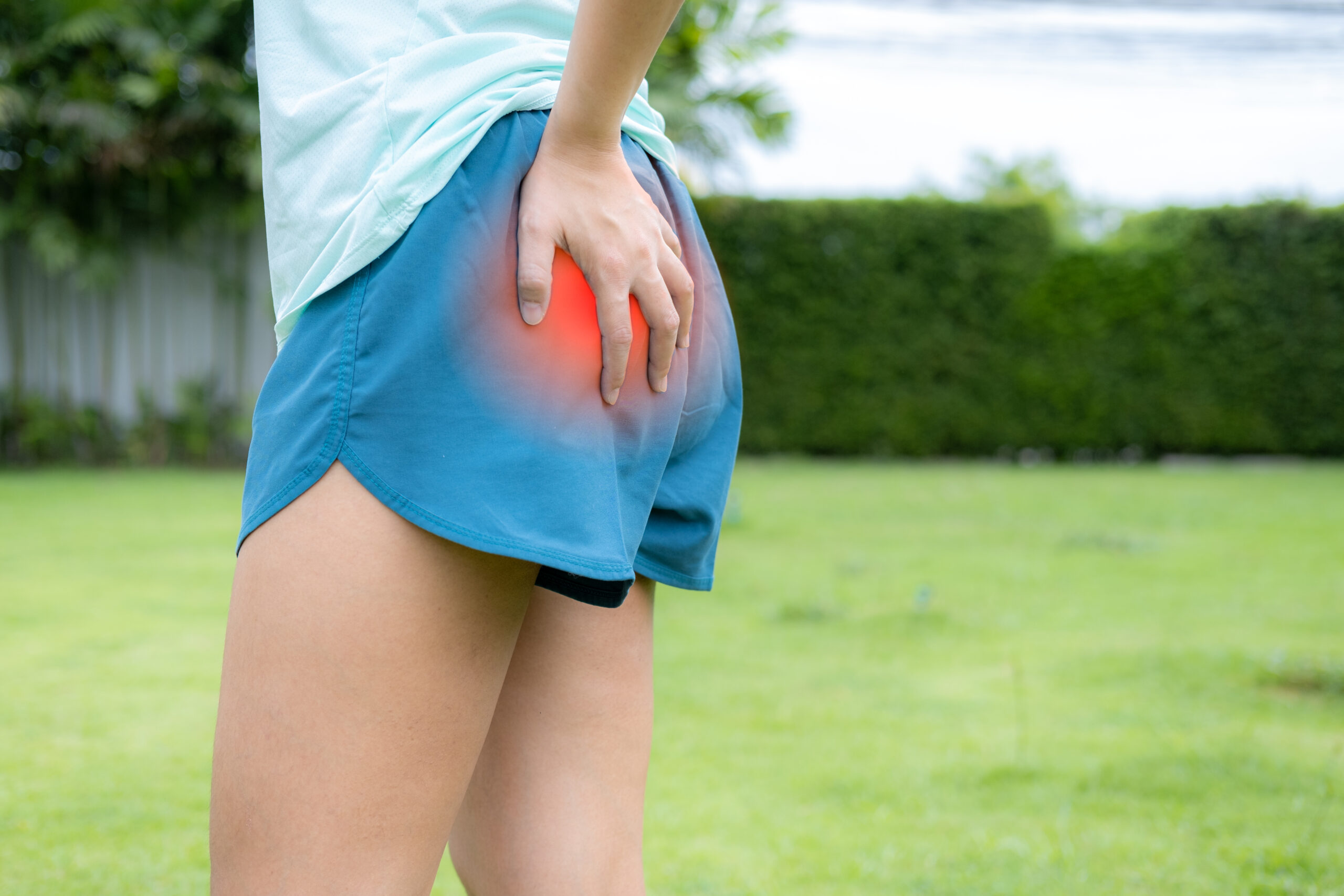Buttock lower back pain is one of the most common types of pain, and it can easily radiate through nerves. There are millions of Americans who suffer from lower back pain every year, according to medical professionals — and much of this pain goes into the buttocks.
There is a close connection between the lower back and the buttocks that most of us overlook. Most of us don’t realize how bad our back and buttocks are until we begin experiencing pain in those areas. Sciatica pain and back pain are closely related medical conditions, and back pain is often the cause of sciatica pain. Your mind-numbing ache in buttocks and back of thighs is real.
Inflammation of the buttock area, numbness in the leg, pain in the upper leg, pain throughout the back of the leg, pain in the lower back, and pain in the buttocks are all symptoms of lower back pain and buttock pain.
Causes of Buttock Lower Back Pain
Bursitis, cysts, abscesses, sacroiliac joint dysfunction, arthritis, and vascular disease can all cause buttock lower back pain. However, for many victims, the problem turns out to be a herniated disk, degenerative disk disease, piriformis syndrome, or sciatica.
Sciatica isn’t a disease or condition — it’s a symptom. The pain radiates down your sciatic nerve, which runs from your lower back through your buttocks and down each leg. A herniated disk or narrowed spine parts can cause sciatica, as well as an ache in buttocks and back of thighs.
Almost everyone has experienced pain in buttocks and legs at one point or another, but if it’s caused by sciatica, something’s amiss. Symptoms of sciatica include back pain that starts in the buttocks and runs down one leg. There are many types of sciatica pain, ranging from dull and achy to shooting and stabbing. In addition, you might experience numbness or tingling, which is often worse after sitting or standing for a long time, or when you cough.
A single episode might last for a few hours, or it can come and go for months at a time. Pain management specialists use your symptoms, severity, and duration to determine the root cause of your pain.
Your Sciatic Nerve and Buttock Lower Back Pain
No other nerve in your body is longer or larger than the sciatic nerve, which is usually the root cause of buttock lower back pain. Sciatica leg pain is one of the most common pain management issues for young, middle-age, and older people due to this muscle running down the backside of both legs.
Sciatic nerves originate in the lower back. They travel through the buttocks and down the back of the legs. Thighs, calves, feet, and toes are all served by portions of this nerve. In addition to affecting the sole of your foot and the outer and back portions of your lower leg, sciatica also impacts the back of your thigh. Your ache in buttocks and back of thighs is usually all connected. Muscles in your legs and knees are often affected as well.
As a result of its function, the sciatic nerve serves two main purposes. With its complex motor function, you can move your legs and feet, and with its sensory function, you can feel sensations within your legs. The sciatic nerve is an amazing tool in your lower extremities. You can bend your knee, extend your knee, rotate your thigh, point your foot, and flex your toes — all using the sciatic nerve.
Consult the Experts on Buttock Lower Back Pain
When you reach your 40s and 50s, you’re more likely to suffer from sciatica and buttock lower back pain since the conditions that cause it become more prevalent. Sciatica is estimated to affect 40 percent of all adults, although studies differ on how many times patients suffer from it throughout their lives.
In the United States, a notable number of people suffer from sciatica every year, making it one of the most common musculoskeletal disorders. Sciatica causes a high disability burden for individuals and a high health-related cost for society.
Workplace activity and occupational workload, such as lifting or carrying heavy objects, have been found to increase the risk of sciatica. Herniated lumbar discs are also associated with non-occupational lifting, especially with straight knees and a bent back. Risk factors for sciatica include work-related twisting of the trunk and exposure to whole-body vibrations. These include driving a car or operating a machine. Overweight and obese individuals, along with those who lift heavy objects and are exposed to whole-body vibration, appear to have the highest risk of hospitalization for sciatica. These groups also experiences a severe ache in the buttocks and back of the thighs.
The problem of sciatica remains very real for many workers who don’t work in physically demanding occupations. It’s possible for office workers or work-from-home professionals — even those who are physically fit — to suffer from bouts of sciatica and aching pain in buttocks and legs simply due to their sedentary jobs.
The best diagnosis is obtained through a physical examination, as well as a review of your medical history. Once sciatica is confirmed and the problematic area pinpointed, a customized treatment plan can be developed just for you.
What Causes Sciatica and Buttock Lower Back Pain?
Sciatica and buttock lower back pain can be caused by degenerative spinal arthritis, slipped discs, lumbar disc disease, and lumbar spine injury or trauma. A breakdown of these causes are as follows:
- Spinal stenosis in the lumbar region.This comes as a result of narrowing within the spinal canal in the low back. This ache in buttocks and back of thighs is caused by radicular discomfort.
- A healthy (or otherwise injured) disk that has herniated.A herniated disc of the lumbar spine, which compresses a nerve root, is one of the most common causes of sciatica.
- Disk degeneration.Degenerative disk disease is the breakdown of cushions between the vertebrae.
- Symptoms from spondylolisthesis.This happens when there is compression of a nerve root by one vertebrae sliding over another.
- Other reasons for cause.A tumor, polyradicular neuropathy, or diabetic neuritis can also cause sciatica.
Additional Sciatica and Other Helpful Facts
In general, men and middle-aged adults are most likely to suffer from sciatica and buttock lower back pain. There is a threefold increase in sciatica among men compared to women. Although sciatic nerve pain can affect people as young as 20, it’s most common among middle-aged adults.
It’s also important for you to know that diabetes can cause pain similar to sciatica. Sciatica may be responsible for shooting leg pain if you have diabetes. The pain caused by diabetic nerves can be similar to pain caused by sciatic nerves, but they are not the same. An individual with sciatica may experience burning, numbness, and shooting pains in one or both legs as a result of peripheral neuropathy. However, leg pain caused by diabetes shouldn’t necessarily be attributed to sciatica. Find out what’s causing your pain. This way, your pain management specialist or doctor can prescribe a treatment plan that best suits you.
The way you walk can also be affected by sciatica, causing pain in buttocks and legs. For some patients, Antalgic Gait occurs when they adjust their walking to cope with sciatic leg pain. As a result of sciatica pain, antalgic gait develops when you adjust your stride length on the affected leg, resulting in a limp. Developing various walking patterns can aid in reducing sciatica pain. However, there are also alternative methods to effectively manage your pain, offering long-term relief. Consult a doctor or pain management specialist about addressing the underlying problem. It’s usually your low back and leg pain caused by sciatica.
Weather can Affect it too
It is also possible for sciatica to flare up during the colder months. In turn, this can cause an ache in your buttocks and back of thighs. Pain severity is strongly correlated with the weather. For people with chronic pain and particularly sciatica, the winter months are much more difficult. Due to decreased blood flow, muscles become tighter and tenser in the colder months. Conversely, in the warmer months, muscles tend to relax and become looser. If you live in an area that gets hit hard by snow and have to shovel a lot, you’re more likely to suffer from muscle strains and sprains as the cold weather stiffens your muscles. If you have sciatic pain (also known as radiculopathy) from snow shoveling, the pain may be exacerbated by an underlying condition, such as a herniated disc.
In most cases, sciatica does not require surgery. However, if severe symptoms aren’t treated, sciatica can cause major problems in the long run, such as terrible aching pain in buttocks and legs. Be on the lookout for neurological symptoms such as weakness, numbness, and tingling. Moreover, the most serious condition is loss of bowel and bladder control, which requires immediate medical attention. There may be a need for surgery if these symptoms are indicative of serious nerve compression. Call your doctor immediately if you experience these symptoms, as ignoring them could result in permanent nerve damage.
Wellness and Pain Can Help
A range of treatment options for buttock lower back pain are available at Wellness and Pain. We offer conservative treatments, routine visits, and minimally invasive quick-recovery procedures. We can assist you in maintaining a problem-free lifestyle by offering lifestyle education and home care advice. This will help you find quick relief from the discomfort in your buttocks and back of thighs.
At Wellness and Pain, we personalize patient care plans based on each patient’s condition and unique circumstances to relieve pain, improve mobility and mental space, and improve your overall health.











